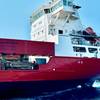Linescape’s Ocean Container Search Engine
Linescape announced the launch of its free, independent search engine for finding and comparing routes and schedules for shipping ocean containers (www.linescape.com). Linescape brings to users an overview of the routes and schedules of the world's carriers, of all sizes, thus giving shippers and forwarders the freedom and ease to find the carrier with the lowest cost or the best schedule for any particular shipment.
Linescape's search engine leverages Web 2.0 technology to simplify sorting through 6 million voyages to 3,000 ports on over 100 shipping lines, and with more added each week. In today's economic climate, optimized logistics and supply chain functionality is critical for success. It is crucial that shippers and forwarders know all of the options they have in order to get the best price and delivery times for shipping goods to their customers. Equally, shipping lines need a place to bring their offerings to the attention of shippers and forwarders.
"We studied the container shipping market and discovered that freight rates can vary by 50% and transit times by 75% on the same route. Choosing the wrong carrier will waste time or waste money or both," said co-founder Dimitrios Sogas. "The biggest problem has always been the difficulty in finding which carriers sail on which routes; many shippers and forwarders do not even know whom to call. They usually contact only familiar carriers for quotations and therefore often miss out on better options that they do not even know exist, because they can't find them."
According to co-founder David Tarizzo, "Linescape finds you alternatives and saves you time, like an Expedia for the container shipping industry, which in the end will save time and money for shippers and forwarders everywhere."
Linescape has introduced several features unique to its search engine, including a "route planner" that presents users with a matrix of all the possible port combinations between two geographical areas and which carriers serve those routes. This feature will simplify one of the most difficult tasks of a user -- trying to choose the best possible origin and destination ports. A unique aspect of the website is the visibility of the number of transhipments in a journey, allowing a user to balance journey times with numbers of tranships to keep risks of delay to a minimum. Another feature is the "multiple lines" feature, whereby users are able to automatically build routes via transhipments, even between two unrelated shipping lines.










